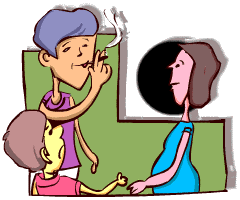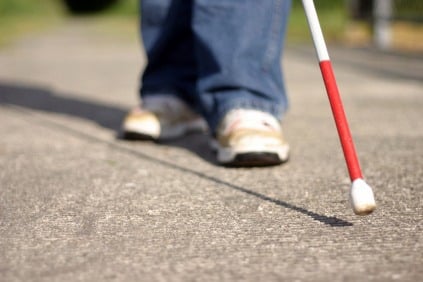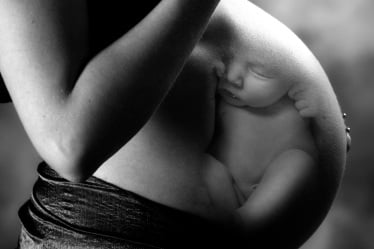‘I am the earner protector, and you, the nurturer home-builder,’ was a division of labour that was working fine over the past couple of hundred years. There is no doubt that without all four of these issues taken care of, any family would find it difficult to survive. But increasingly, women are now capable of excelling in each of these functions, and given the right socio-economic background, they can make do without men – they certainly are not helplessly dependent on men any more.

Why do we need Fathers? [Illustration by Anup Singh]
From a woman’s point of view, one thing is very clear, the socio-economic need of a father in a family is defunct. To say the least, the family does not need a father (read man) because he would not know how to earn a living or protect himself and his family in a big bad world.
Surely, there has to be more utility to a man/father than his sperm – which, in any case, should not be difficult to find, for a woman who fits the above description. So, is it time to consign the concept of fatherhood to history – a concept, which the author believes is relatively new to the history of human thought.
Any man who argues that ‘I earn more than you’ is walking on a thin chauvinistic line and is clearly in danger of being proved wrong, especially if women decide not to take long sabbaticals to have and nurture babies. And any man who argues in favour of his security features is competing with a burglar alarm and a dog.
Let us inspect a few other rationales. A family, especially children, need two role models – both male and female. This theory works somewhat, mainly because it exists in the female domain of nurture. But why this person should be the biological father of the children goes unanswered, unless one insists that he will make a better male role model than one who is not.
What about companionship? Human beings feel comfortable when they are in ‘touch’ with other people – they want to talk, touch, love, confide, and so on. Once again, this only justifies the need for a man in a woman’s life, not a father in a family.
And sex? To put it in perspective, a women’s sexual relationship with a man has nothing to do with fatherhood. Fertilisation yes, but not fatherhood.
So what use does a father serve in a family? For a man, the family is a perfect arrangement. He gets a companion, a stable sexual partner, who will make his house, take care of ‘his’ children (as if he had anything to do with it), while he is free to conquer the world and sleep with his concubine.
But since we have been brave enough to look at this issue from a woman’s point of view, let us push the point.
The only reason why a woman should keep him in the house she makes and allow him to take on the title of a ‘father’ is if he participates in the nurturing of the children and making of the house. The other rationale is that she may be comfortable and willing to live with the traditional division of labour – ‘I am the nurturer home-builder, and you the earner protector.’
While we talk of division of labour, one wonders if some men would really like to actually divide the labour. That would be a step forward. Since men still hold the balance of power in their favour, they control most of the world’s research budgets, medical institutions, political office and so on – they may want to throw themselves into the task of finding a way to get pregnant and have their own children.
After all, testing times call for radical action, as their cover is getting blown away and they stand exposed: impotent, powerless and homeless.
In spite of the weirdness of the thought, why does this sound like a typical male response?
Aggression is the best form of defence, right? Wasn’t that an essential part of the male cultural heritage?
Well, not any more. Having learnt how to be aggressive, at work and at home, women have taken the battle into the men’s turf. So, a higher degree of aggression, that men must be capable of, should restore the balance of power. (Let’s nuke them!)
The other war strategy – it is a war, since a whole tradition, a way of life is being threatened – would be to outflank the attacking side. Offer a token resistance in the battlefield and attack their unguarded home turf. Become home-makers and nurturers and let the women tear each other down for a half percentage point of the toothpaste market, or whatever else that will allow them to display their machismo.
Or, we could consider the middle path. Avoid the trap of gender politics, and realise that it is close to impossible for human beings to have power and not flaunt it. Close, but not impossible.
No relationship can ever be totally bereft of power equations, but good or stable relationships are based on some equilibrium, some balance, that both partners are o.k. with. This may be based upon mutual trust and respect, or it may be based upon dominance and subjugation. Mind you, both work. A sadist and a masochist may make a happy marriage.
Surely, the former will be less brittle, and more stable, and a good ideal, but we should keep in mind that the ability to respect and value other people even though they are not like us, and do not share our idiosyncrasies is a human characteristic that is inflicted on our entire existence, not just our marriages.
The other thing that would be a good idea to keep in mind is that most of us instinctively give ourselves the benefit of doubt and overestimate our contributions, sacrifices and efforts, and underestimate others’. Once again, this is about our relationships per se not just about marriage.
The point I am leading to is that a happy family does not really need justification or the need for a father. That makes it simpler, but for the sake of discussion it would be interesting to look at some key research findings.
(These are statistics from the US, but the author believes that they would be applicable here just as well, if not more.)
Child Abuse:
Compared to their peers living with both parents, children in single parent homes had:
- 77 per cent greater risk of being physically abused.
- 87 per cent greater risk of being harmed by physical neglect.
- 165 per cent greater risk of experiencing notable physical neglect.
- 74 per cent greater risk of suffering from emotional neglect.
- 80 per cent greater risk of suffering serious injury as a result of abuse.
Overall, a 120 per cent greater risk of being endangered by some kind of child abuse.
Source: Sedlak, Andrea J. and Diane D. Broadhurst. ‘The Third National Incidence Study of Child Abuse and Neglect: Final Report.’ U.S. Department of Health and Human Services, National Center on Child Abuse and Neglect. Washington, DC, September 1996.
Crime:
In a study using national data on over 1600 juveniles in treatment for sex offenses, it was found that:
- only 27.8 per cent were living with both biological parents.
- 26.1 per cent were living with a biological parent and a step-parent.
- 23.1 per cent were living with their mother only.
- 3.2 per cent were living with their father only.
- 6.3 per cent were living with a parent and that parent’s housemate.
- 15.1 per cent were living with neither parent.
Source: Ryan, Gail et al. ‘Trends in a National Sample of Sexually Abusive Youths.’ Journal of the American Academy of Child Adolescent Psychiatry 35 (January 1996): 17-25.
A study of juveniles in state reform institutions found that 70 per cent grew up in single or no parent situations.
Source: Beck, Allen, Susan Kline, and Lawrence Greenfield. Survey of Youth in Custody, 1987. U.S. Bureau of Justice Statistics. Washington, DC: GPO, September 1988.
Education:
Young children in single-mother families tend to have lower scores on verbal and math achievement tests.
Source: U.S. Department of Health and Human Services. Public Health Service. Center for Disease Control and Prevention. National Center for Health Statistics. Report to Congress on Out-of-Wedlock Childbearing. Hyattsville, MD (September 1995)
In a study of 378 black children between the ages of 6 to 9 years, black children in mother-only households scored significantly lower on tests of intellectual ability than black children living with two parents.
Source: Luster, Tom and Harriette Pipes McAdoo. ‘Factors Related to the Achievement and Adjustment of Young African-American Children.’ Child Development 65 (1994): 1080-1094.
Family disruption increases the risk of high school dropout for students, on average, by:
- 150 per cent for whites.
- 76 per cent for blacks.
- 100 per cent for Hispanics.
Source: McLanahan, Sara and Gary Sandefur. Growing Up with a Single Parent: What Hurts, What Helps. Cambridge: Harvard University Press, 1994. 58.
Mental Health:
Eighty percent of adolescents in psychiatric hospitals come from broken homes.
Source: Elshtain, Jean Bethke. ‘Family Matters: The Plight of America’s Children.’ The Christian Century (July 1993): 14-21.
In a study using a nationally representative sample of 2,600 children aged 4 to 16, 17.4 per cent of children whose parents had divorced or never married scored above the 90th percentile on a standard psychological test indicating problems with adapting, compared to only 9.2 per cent of children who were living with both married, biological parents.
Source: Achenbach, Thomas M. et al. National Survey of Problems and Competencies among Four to Sixteen Year Olds: Parents’ Reports for Normative and Clinical Samples. Society for Research in Child Development 225 (1991).
Three out of four teenage suicides occur in households where a parent has been absent.
Source: Elshtain, Jean Bethke. ‘Family Matters: The Plight of America’s Children.’ The Christian Century (July 1993): 14-21.
Children who live apart from their fathers are 4.3 times more likely to smoke cigarettes as teenagers than children growing up with their fathers at home.
Source: Stanton, Warren R., Tian P.S. Oci and Phil A. Silva. ‘Sociodemographic Characteristics of Adolescent Smokers.’ The International Journal of the Addictions 7 (1994): 913-925.
Physical health
A child health study of 17,110 children indicated that children who live with their single, divorced mothers had risks of injury that were 20 per cent to 30 per cent higher than for children who live with both biological parents. These children also had higher risks of asthma, speech defects, and frequent headaches.
Source: Dawson, Deborah. ‘Family Structure and Children’s Health and Well-Being: Interview Survey on Child Health.’ Journal of Marriage and the Family 53 (August 1991): 573-584.
Teenage Sexual Activity
A white teenage girl from an advantaged background is five times more likely to become a teen mother if she grows up in a single-mother household than if she grows up in a household with both biological parents.
Source: Whitehead, Barbara Dafoe. ‘Facing the Challenges of Fragmented Families.’ The Philanthropy Roundtable 9.1 (1995): 21.










